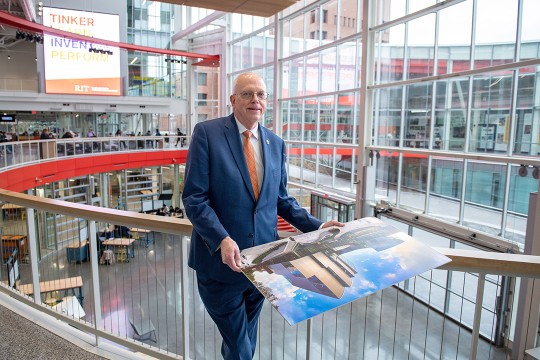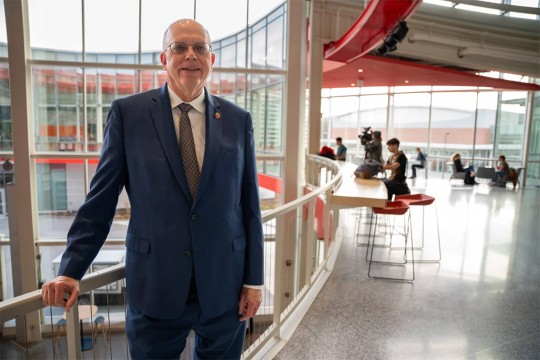Grants Aim to Improve Education for Deaf Students
The first grant, worth $199,000, was given to NTID for "Clearinghouse on Mathematics, Engineering, Technology and Science (COMETS): A Comprehensive Resource in the Education of Deaf Students." The objective is to establish a network connecting deaf students, teachers, parents and support providers through a centralized website, where participants will exchange information on the best educational methods in SMET fields. "I have received more than 200 requests each year for the past five years from people looking for help to improve science, math and engineering education. COMETS will provide a much needed resource for educators throughout the country," said Lang.
To date, more than 450 people and organizations have joined the COMETS network since the website went online. Visit the website at http://www.rit.edu/~comets for more details.
"This project will be a ‘distance education’ arm of NTID’s outreach efforts, helping educators put into practice the most up-to-date research on successful strategies educating deaf students," added Lang.
The second grant worth $430,000, was given to the Classroom of the Sea (COS) project, which focuses primarily on "communication access," and will identify scientific terminology important to teaching marine science and then develop prototypes of technical signs in the context of American Sign Language (ASL). For example, the term "compressional wave," does not have a sign commonly used in ASL. By analyzing how deaf students and their teachers express this concept, the COS researchers will develop appropriate guidelines to enhance the teaching-learning process. Such a model, developed in consultation with linguists and sign language instructors, may be applied to other areas of science and mathematics as well.
A lexicon of scientific signs is being developed for the COS project to identify existing signs and determine the terms for which no signs currently exist. Further plans include developing video that demonstrates the use of technical signs and ASL. The COS project also includes deaf high school students apprenticing with marine scientists and taking oceanic excursions to gain hands-on experience. Dr. Lang’s role is to study the situations requiring technical and scientific signs and to enhance the pedagogy through careful study of the communication that occurs.
The COS project is based at the University of Connecticut and is conducted with staff and faculty from the American School for the Deaf (ASD), the Neag School of Education at the University of Connecticut, the National Undersea Research Center (NURC) at the University of Connecticut, and NTID. The project is directed by Dr. Ivar G. Babb, a NURC researcher. For more details, visit the COS website at http://ap.nurc.uconn.edu/cos.
The first and largest technological college in the world for deaf and hard-of-hearing students, NTID offers educational programs, access, and support services to the 1,100 deaf and hard-of-hearing students at the Rochester Institute of Technology in Rochester, NY. For further information, visit NTID’s web page at: http://www.rit.edu/NTID.
For more NTID news go to http://www.rit.edu/NTID/newsroom.














